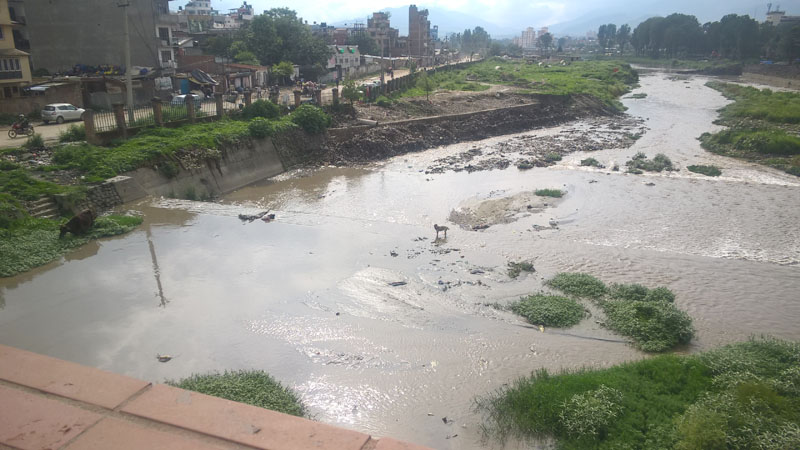Work on Bagmati improvement project DPR begins
Kathmandu, April 20
The High Powered Committee for Integrated Development of the Bagmati Civilisation is in the process of preparing detailed project report for the second phase of the Bagmati River Basin Improvement Project.
The second phase will centre on increasing water availability in the Bagmati River during dry season to raise the river’s assimilative capacity.
According to the HPCIDBC, the second phase will comprise construction of a 95 metre high dam to flush Pashupati area’s garbage, establishment of water treatment plants and park on the banks of the river.
Project Manager at HPCIDBC said the committee had begin work on preparing a detailed project report. “Construction of infrastructure that would increase water flow will be the priority in this phase,” he added.
The US $36 million project began in 2014, and will continue until 2021.
The Bagmati River originates from Baghdwar of Shivapuri hills to the north of Kathmandu Valley. The river is fed by numerous tributaries originating from the Mahabharat and Siwaliks range before it reaches Tarai at Karmaiya and then flows to the Gangetic plains.
The total catchment area of the Bagmati River is about 157 square km with a length of 44 km from its origin at an elevation of 2,732 metres to Katuwaldaha, which lies at an elevation of 1,140 metres.
The Bagmati Action Plan (2009-2014) focused on the part of the Bagmati River and its tributaries within Kathmandu Valley. Major tributaries of the Bagmati River in the Valley include Manahara, Dhobikhola, Tukucha, Bishnumati, Balkhu, and Nakkhu rivers.
A decrease in water discharge exerts enormous impact on the overall river ecosystem, damaging the habitat of the aquatic life, exposing river banks, and channeling the flow. The discharge record from the Department of Hydrology and Meteorology for 1975-1999 at Sundarijal station revealed that water discharge was decreasing.
While there are frequent high discharges at the time of flood in the Bagmati River, the overall water discharge is decreasing. The tapping of water for drinking and irrigation purposes from main sources of rivers is the root cause of the decrease.






